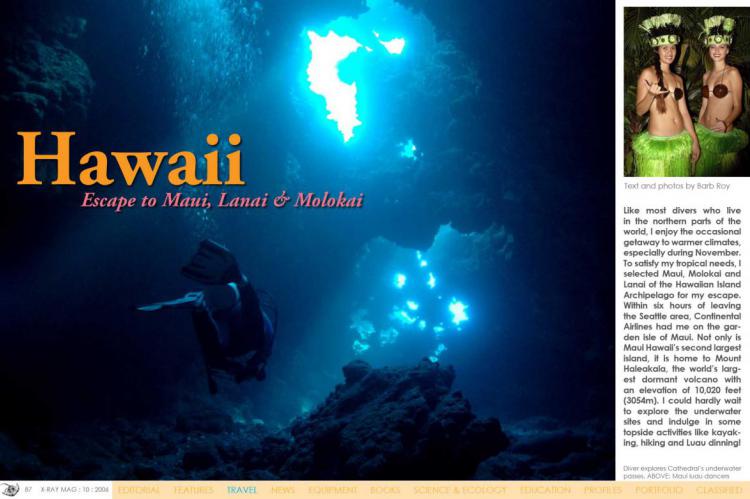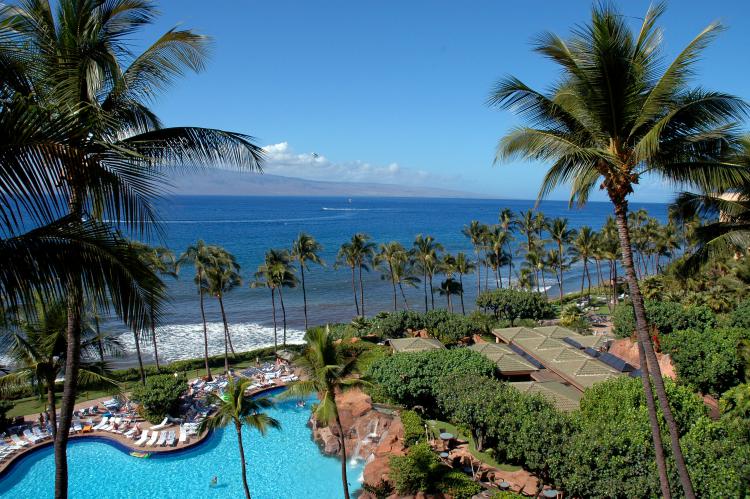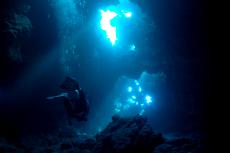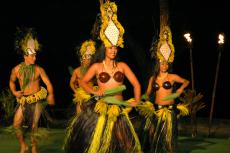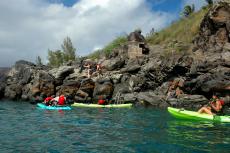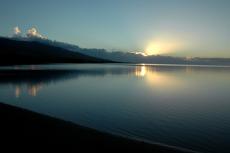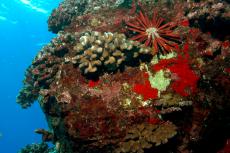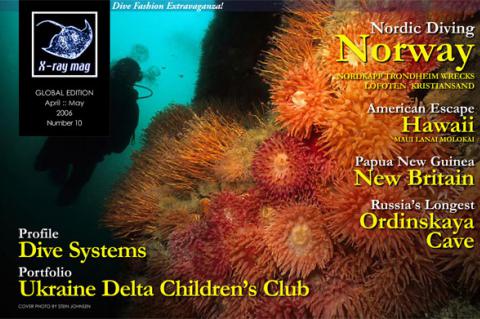Hawaii
Like most divers who live in the northern parts of the world, I enjoy the occasional getaway to warmer climates, especially during November. To satisfy my tropical needs, I selected Maui, Molokai and Lanai of the Hawaiian Island Archipelago for my escape. Within six hours of leaving the Seattle area, Continental Airlines had me on the garden isle of Maui.
Not only is Maui Hawaii’s second largest island, it is home to Mount Haleakala, the world’s largest dormant volcano with an elevation of 10,020 feet (3054m). I could hardly wait to explore the underwater sites and indulge in some topside activities like kayaking, hiking and Luau dinning!
Tags & Taxonomy
Polynesian settlement of Hawaii occurred over 1000 years ago after crossing 4000 miles (6437km) of open ocean from the South Pacific. Captain Cook arrived in 1778 and was later killed on a return journey. In the 1820’s, Hawaii became an important whaling station for European fisherman, followed by a flood of missionaries. After becoming a USA territory in 1900, Hawaii was adopted in as the 50th state in 1959.
Maui Adventure
After securing my rental car, I headed to Lahaina, on the western side of the island, to the comfortable confines of the Hyatt Regency resort. A fragrant breeze with a hint of tropical flowers caressed my face as it swirled in from an open lanai (balcony). Although I scanned the turquoise ocean below for passing whales, it was too early in the season. Within a few weeks though, over 3000 whales will have migrated from the north to spend their winter around Maui.
Cathedral
Early the next morning I walked with my scuba gear along the ocean-side path to meet the crew of Trilogy Excursions for a day of diving around Lanai. After paperwork at their beachside hut, I boarded a huge catamaran, one of seven boats operated by Trilogy, with several other guests. Within minutes we were underway to a popular site called the “Cathedral”. Our group of eight had two divemaster guides; Mike Jones and Shigeki Ichinose, who not only shared their knowledge of marine biology, they enlightened us with local cultural stories as they prepared the gear.
Before long Mike had four of us in the water, leading us down to the Cathedral entrance at 60 feet (18m). The dark abyss from within seemed to beckon further investigation. We slowly entered as a group. Ancient lava flows created these massive cave-like structures centuries ago as several lava tubes entered from different directions. Now, only a hollowed out opening remained with a ceiling riddled with holes.
I paused on the warm sandy floor, now at 80 feet (24m), to take it all in. The area resembled a spacious church with dancing beams of light pouring in from above. My companions were equally in awe as they swam around me, intertwining with multitudes of shimmering fish. Mike pointed out the lobster and crabs hiding beneath ledges and odd looking sea cucumbers in the sand. Shigeki brought his group in as we departed, following Mike around to the backside of the cave. While pausing to photograph a colorful coral head, everyone disappeared within a small passageway, leading back into the cathedral. But Mike had returned to retrieve me. Once again I entered the vast cavernous space inside the cathedral, before ascending.
Fish Rock
After a tasty BBQ lunch on the boat, we were back in the water at another of Lanai’s wild sites called “Fish Rock”. At the surface the water churned and swirled, but beneath its turmoil surface life was plentiful. As with the previous dive, visibility was at least 100 feet (30m) with a water temperature of 79 degrees.
The terrain was mostly made up of fingering lava rock reefs surrounding a pinnacle that pierced the surface. Rolling surface waves cascading over a sheer side was awesome to watch from 60 feet (18m) down. During Mike’s tour we came across pairs of butterfly fish, colorful sea stars, red pencil urchins and more odd-looking lava structures. Overall, Lanai’s underwater sites were very healthy and topside proved to be a great place to spend a day exploring, via a passenger ferry from Maui.
Black Rock
The next day I joined dive instructor Joshua Bischoff from Five Star Scuba for a shore dive at “Black Rock” in front of the Sheraton Maui Hotel and Resort. Visiting divers can explore this site with a buddy (on their own) or hire a guide from Five Star Scuba. Five Star’s beachside facility also offers complete scuba and snorkeling rental sets.
Josh and I easily entered through the surf (mornings are best) and headed out underwater around the black cliff and outcropping of boulders. The ocean floor was blanketed in creamy white sand. At 30 feet (9m) there weren’t very many reef fish and the coral was sparse. Just as I was wondering if putting a wide angle lens on my camera was a mistake, I turned to find a green sea turtle hovering above me! It was a young female Honu (Hawaiian population), letting my exhalation bubbles roll over her ventral (belly) area.
I had read about the populations’ fight for survival and their slow come-back over the years, but she looked very healthy. Her body was streamlined and her flippers long and powerful. I could see the green color of her body fat, caused from the algae they eat and that she was not able to retract her head like her terrestrial counterparts. For a while she swam circles around Josh and I until we noticed another green sea turtle sleeping under a ledge. A larger male, maybe 350 pounds (159kg), lay still.
These huge reptiles can actually stay submerged for more than two hours at a time. Unfortunately, he seemed to be afflicted with Fibropapilloma, a potentially deadly disease causing the growth of large bulbous tumors, mainly on soft tissues. Although it looked awful, the turtle awakened and headed to the surface for a breath of air, followed by the female. Josh and I kept our distance and returned to the beach.
As we cleaned our gear Josh explained that the turtles are more plentiful during early mornings because fewer divers are around. He also added that due to Federal and State laws governing their protection, swimmers and divers are not allowed to ride them or cause undue stress, making the turtle the one in charge of the encounter at all times.
Turtle Love
It was evident after our dive at Black Rock that the turtles are the highlight of this location and very curious of underwater visitors. As long as divers and snorkelers keep a respectful distance from the Honu, co-enjoyment of the site is believed possible.
Intrigued with these fascinating critters, I later searched the Internet and found on the ‘Turtle Trax’ website some information about recent studies where scientists feel the Fibropapilloma, although debilitating and a serious concern, will not drive the honu to extinction. I also discovered Hawaii was not the only location dealing with the Fibropapilloma problem: Florida and parts of the Caribbean face similar maladies.
The following day I joined up with a group from Maui Eco-Adventures, for a hike/kayak combo adventure. Their van picked me up and we headed for the Nakalele coastline, Maui’s northernmost point and the youngest lava flow on the western side. After receiving a narrative talk on the areas history and a few local legends, we commenced on a 3-mile hike down an easy path to just above the water and along the coast in a circular direction. The black lava didn’t look
Download the full article ⬇︎
